It’s practically Canadian law to always have a bottle of maple syrup on hand. You never know when you’ll need to drizzle it on pancakes or perform North America’s favourite party trick: pouring it on fresh snow to make maple taffy.
The majority of the world’s maple syrup is produced in the glorious “maple belt,” which runs through the Canadian provinces of Ontario, Quebec, New Brunswick and Nova Scotia, as well as some areas of United States. Canada is the leading producer, making up 71% of the global market – it’s no surprise that the maple leaf features on the country’s national flag.
A Late Winter Treat
Maple taffy (or tire d’erable, as it’s known in Canada’s French-speaking province of Quebec, where 92% of Canada’s maple syrup is produced) is essentially the magic that occurs when hot maple sugar meets ice. The result is a chewy sweet treat that’s almost as easy to make as it is to consume – just wrap it around a popsicle stick and let the rich, aromatic maple goodness melt in your mouth.
When enjoyed at one of Quebec’s many cabanes à sucres (sugar shacks) with a view of Canada’s winter wonderland, it tastes even better. The best time to experience the delicacy is during sugar season, which runs from March through April when the fresh sap is collected from maple trees and boiled into syrup. Sugar shacks often serve other traditional Canadian dishes, like buckwheat pancakes and pea soup, but their showstopper is the taffy.
Reviving A Classic
“The most important job is the boiler – the person who’s cooking the maple syrup. They’ve got a special touch, almost like a winemaker,” says Vincent Dion Lavallée, chef and co-owner of Au Pied de Cochon’s newest sugar shack, Cabane d’à côté. “114.5 degrees Celsius is the optimal temperature for bringing out the best maple flavours.”
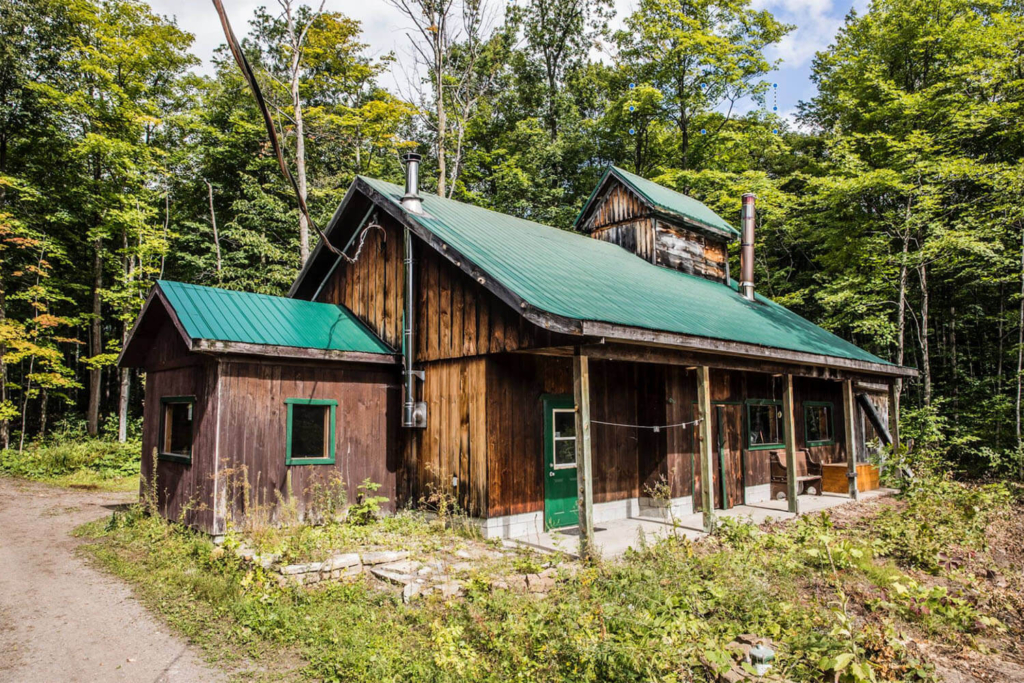
[Photo: Caban d’à coté via Facebook]
Au Pied de Cochon has become somewhat of a Canadian landmark since its opening 10 years ago, when Montreal chef Martin Picard noticed a decline in the popularity of traditional sugar shacks and wanted to put maple syrup back on the map. Along with its own maple tree farm, the culinary venture boasts two restaurants – including Cabane à Sucre Au Pied De Cochon, a laboratory for experimental, seasonal and locally sourced dishes like foie gras paired with maple syrup. On the other side is Cabane d’à côté, a year-round traditional sugar shack, where syrup and various dishes are cooked over a wood fire. Guests gather around maple tables, which are carved out in the centre and filled with snow for taffy tasting.
Sappy Specialties
“Maple trees produce their syrup from the soil, the terroir – you’ll get different flavours in different locations,” says Lavallée. “You need the proper climate: a really low temperature at night (-7 degrees Celsius) and higher temperature during the day (7 degrees Celsius).”
This temperature dichotomy allows the tree to absorb water from the soil during the night and then push it back down to the bottom of the tree during the day, making it easy to collect the sap. Once extracted, sap is boiled down – it takes about 40 litres of sap to create one litre of maple syrup, as the sap is 98% water. For taffy, the maple syrup must be boiled down further to create a thicker consistency. Unlike table syrup à la Aunt Jemima, true maple syrup has no additives and is graded in Canada between Extra Light and Dark – light syrup is preferred for candy making, medium is best for pancakes and taffy, and dark is usually used for industrial purposes.
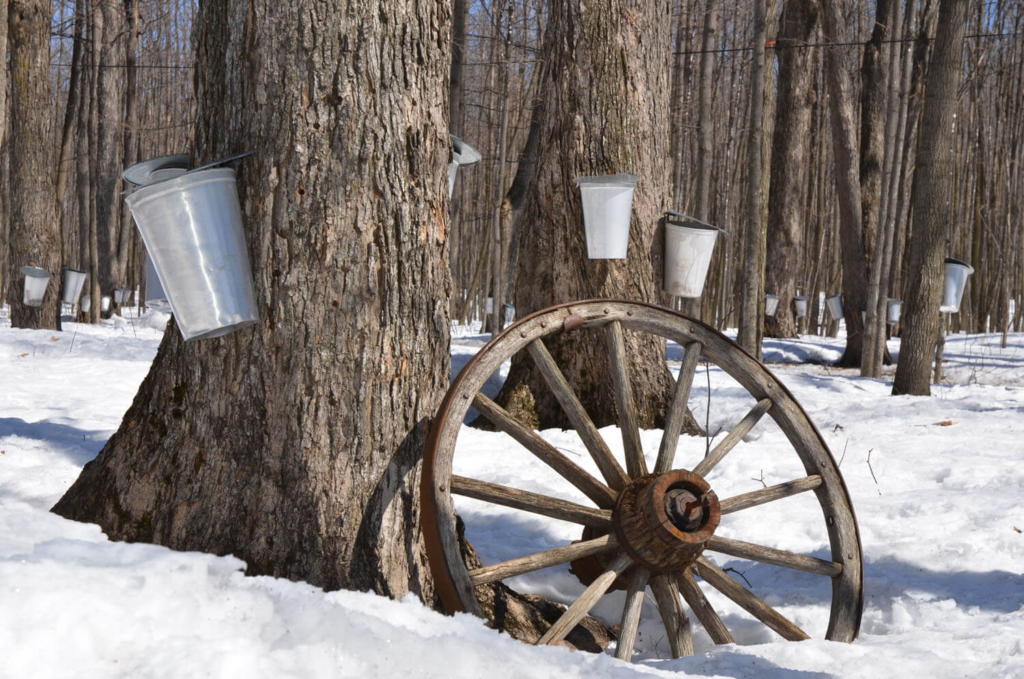
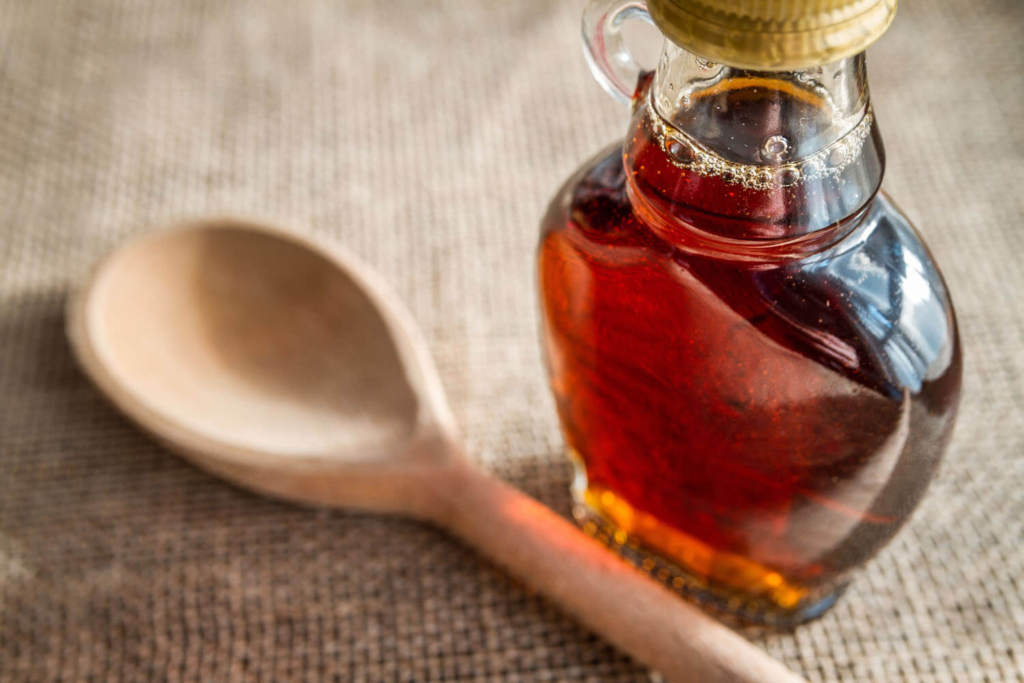
Many of the best sugar shacks, including Au Pied de Cochon and Sucrerie de la Montagne, are conveniently located just outside of the city of Montreal. Tastings can also be experienced at The Citadelle, Quebec’s largest maple syrup cooperative, which represents over 2,000 maple syrup producers and honours multi-generational traditions.
Tapping Into History
While the story behind the discovery of maple syrup is a mystery, legend has it that maple water was first tapped after Canada’s First Nations people witnessed a squirrel drinking the sap from a tree. This “sweet water” soon became essential to food preservation, allowing indigenous communities to cure meats like venison and store them for periods in the winter when food was scarce. Maple water was later re-discovered by the European settlers as part of the voyage of French explorer Jacques Cartier, who founded Canada in 1534. Following the First Nations people who would tap trees by cutting a V-shape into the bark and inserting a willow tube to act as a tap, the settlers began collecting it by the gallon in a similar fashion. In the centuries to follow, maple would skyrocket in popularity. Even King Louis IV reportedly enjoyed maple sugar-coated almonds from Quebec.
Today, Canada continues to export maple syrup to over 50 countries – its main buyers being Germany, France, the United Kingdom, Japan and Australia. In 2016, there were reportedly 11,468 maple farms producing over 12.2 million gallons of syrup, thanks to a growing interest in artisanal products and alternative sweeteners. After all, maple syrup is rich in essential minerals like magnesium, zinc and potassium, giving all the more reason to indulge in this natural (and somewhat healthy) delicacy.
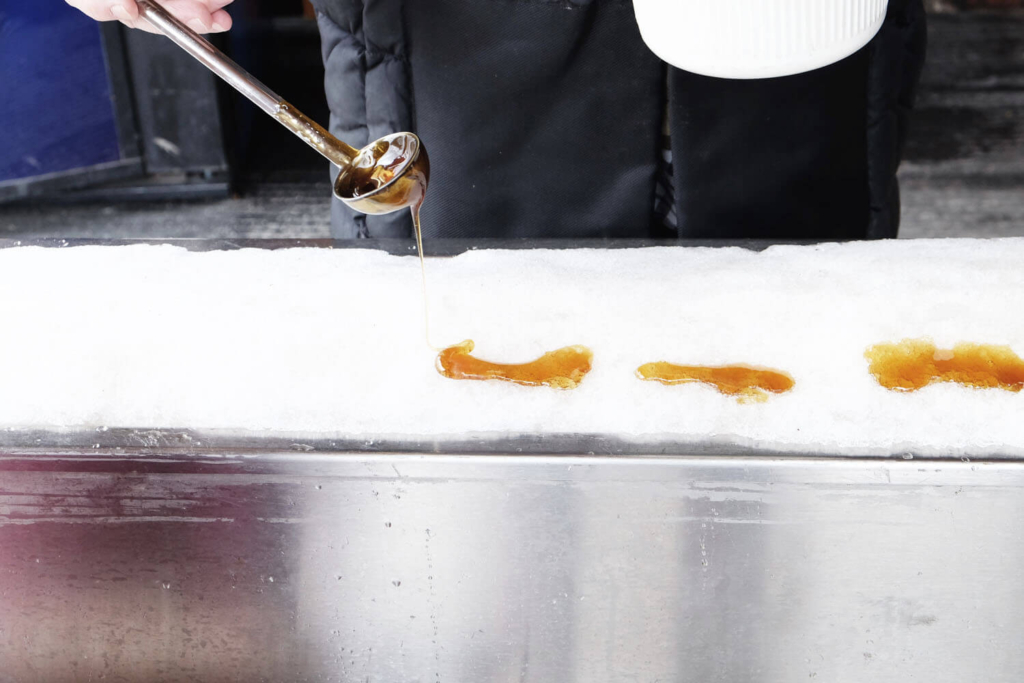
If you can’t make the journey to a sugar shack in the Quebec countryside, it’s easy to make maple taffy at home – preferably for an audience with a sweet tooth and a penchant for play.
How To Make Maple Taffy (On Snow)
1. Gather some fresh, clean snow (if you live in a city, take extra precautions when collecting snow to ensure it’s not dirty). Pack it down into a tray and set in the freezer to ensure it does not melt.
2. Pour half a cup of real maple syrup into a saucepan. Medium-grade syrup works best, but light and dark maple syrup can also be used, depending on your preference.
3. Bring the syrup to a boil over medium-high heat. Using a candy thermometer, cook until syrup reaches 112 to 118 degrees Celsius. If you don’t have a thermometer, test by dropping a tiny amount of the syrup in cold water; it should form a firm ball.
4. Pour two tablespoons of maple syrup per piece of taffy onto the snow in thin lines about 10 centimetres long. Let the strips cool for about five seconds before removing them from the snow by wrapping them onto popsicle sticks.
5. Enjoy before it melts!
[Photo: Patrick Joyce via Flickr]

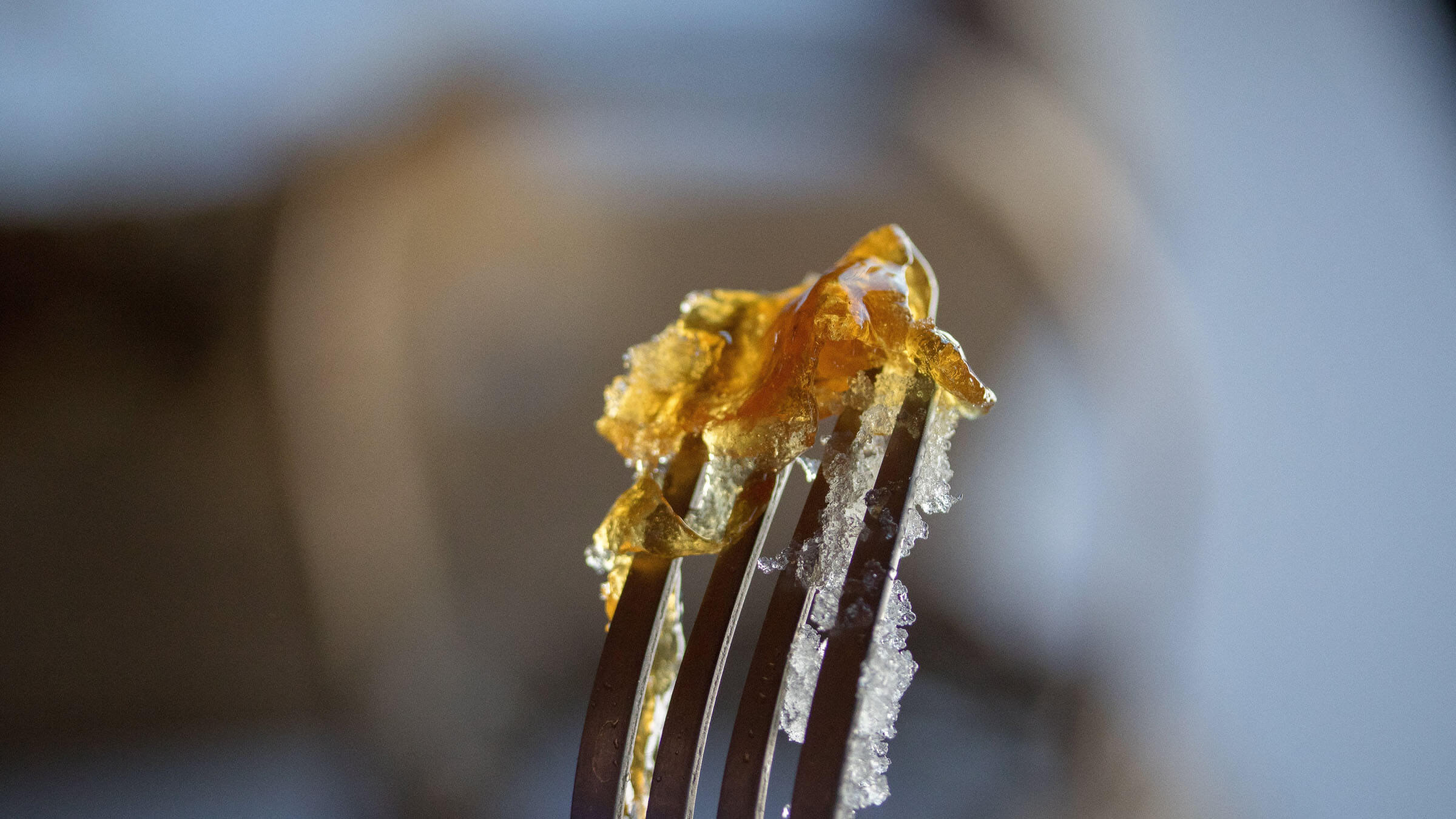












Sorry, the comment form is closed at this time.